March 17, 2021
Shared use paths-also called trails, multi-use paths, greenways, or bike paths-bring many benefits to their communities. By providing safe and accessible transportation and recreation opportunities separated from motor vehicle traffic, shared use paths benefit the individuals using them and can also contribute to economic development and sustainability goals of their larger community.
But how can this value be quantified?
Recognizing the lack of research and data around quantifying the impacts of active transportation infrastructure, MassTrails-a multidisciplinary team of state agencies, including MassDOT, the Department of Conservation & Recreation (DCR), and the Executive Office of Energy and Environmental Affairs (EEA)– commissioned a team at Kittelson to explore, measure, and analyze the impacts of shared use paths. We partnered with MassTrails to study four shared use paths in Massachusetts (the Minuteman Commuter Bikeway, Northern Strand Community Trail, Mass Central Rail Trail – Norwottuck Branch, and Cape Cod Rail Trail) using a combination of path counts from automatic permanent bicycle and pedestrian counters and paper intercept surveys to collect information from path users, residents, and business owners.
MassTrails and Kittelson shared our findings in a recent study titled Impacts of Shared Use Paths, one of the first documents of its kind to quantify how shared use paths improve the health, well-being, and quality of life of a community. While this data centers around paths in Massachusetts, findings like these can be used to support shared use paths everywhere, and help active transportation projects compete for transportation funding.
You can access this report here, and read on for some of the key takeaways!
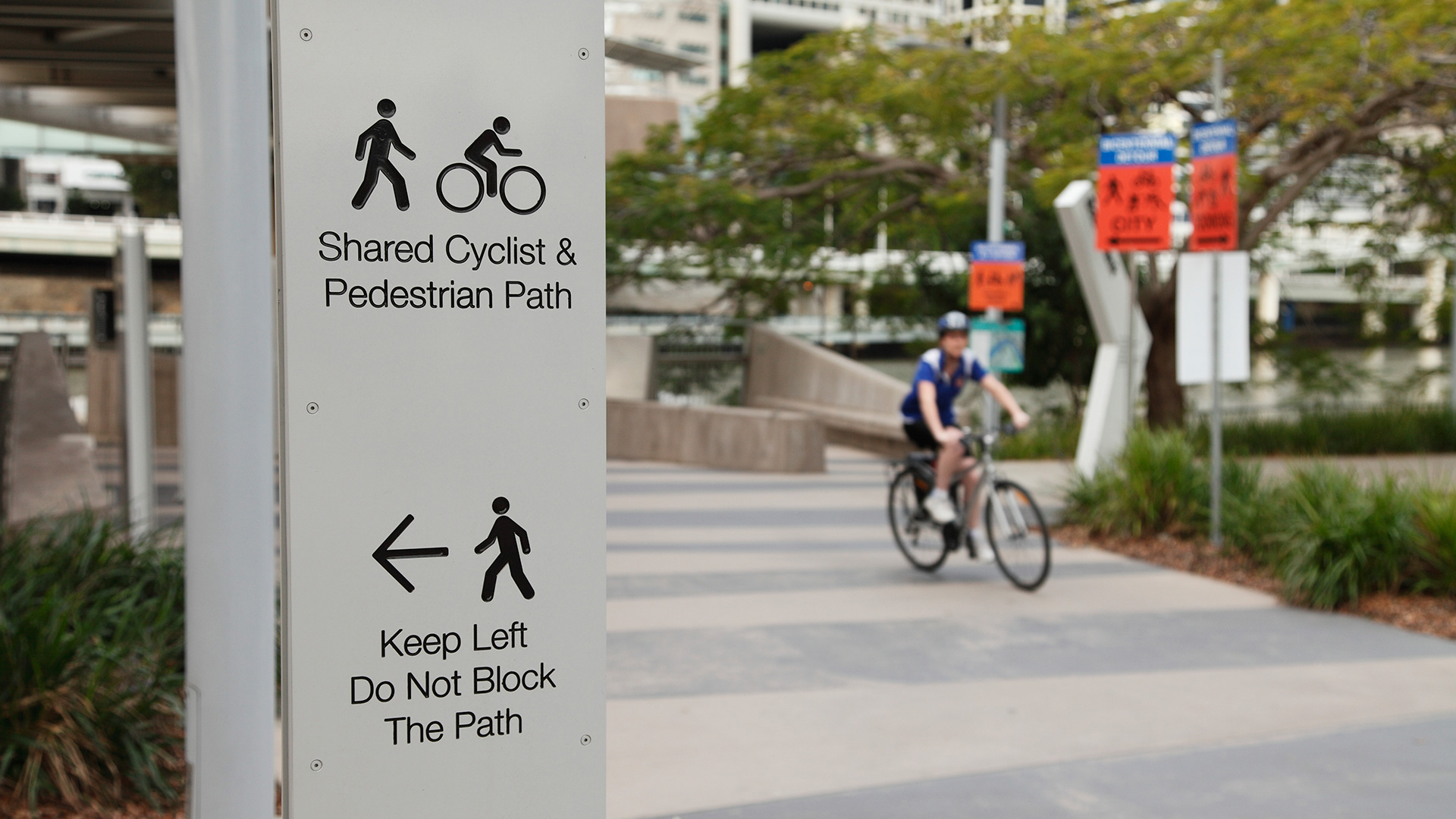
Health Benefits of Shared Use Paths
Shared use paths provide desirable space for physical activity, which in turn can reduce medical costs and prevent or decrease some types of chronic illnesses due increased physical activity. Shared use paths can also provide mental health benefits by providing a place to exercise, which has been linked to decreasing mental health conditions such as depression and anxiety.
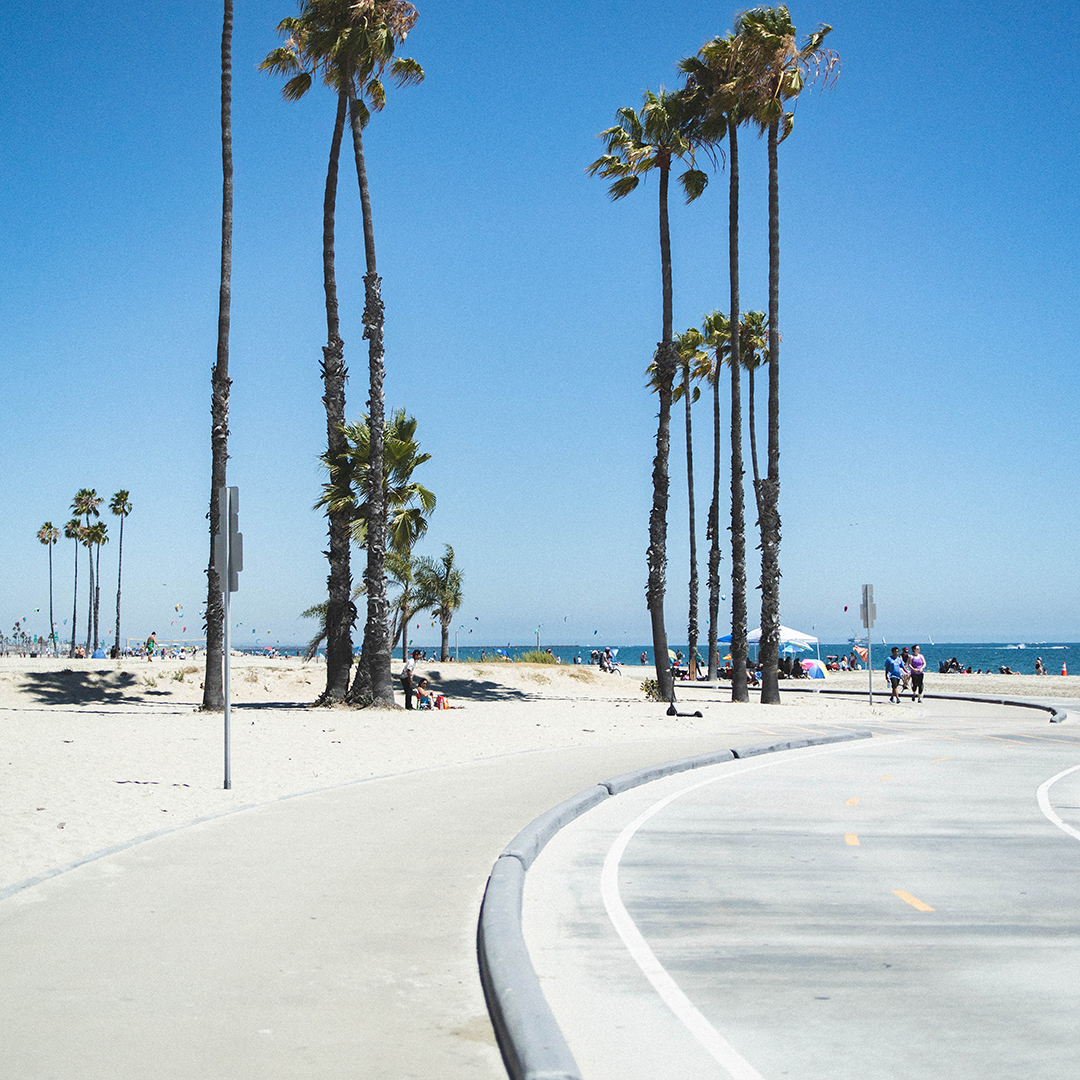

The Center for Disease Control and Prevention (CDC) recommends 150 minutes of medium intensity exercise per week as regular physical activity, and based on this threshold, estimates average annual healthcare savings. As shown in the graph below, based on data from the CDC, inactive individuals (exercising for less than ten minutes weekly) spend an estimated $1,313 more on average in annual health care expenditures as compared to an active individual (exercising for 150+ minutes weekly).
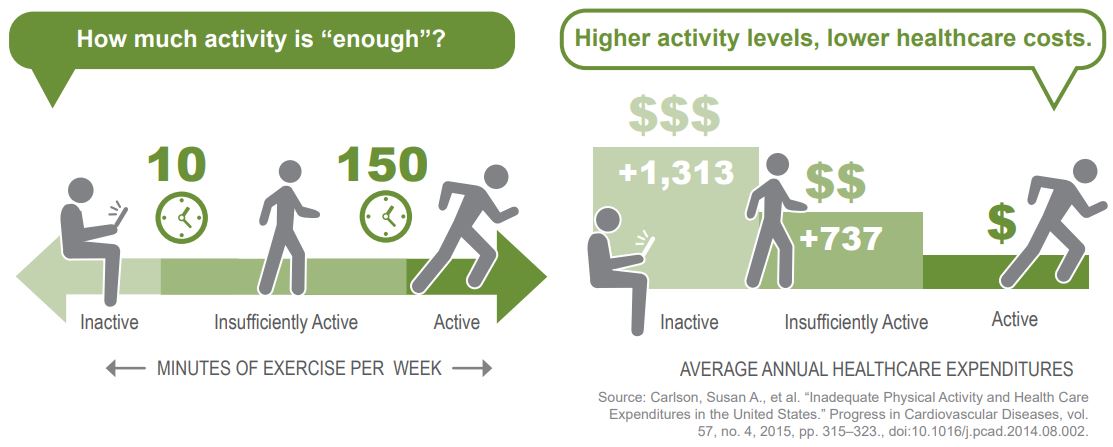
All four of the shared use paths we studied had an impact on encouraging users to increase their levels of physical activity. Based on the survey results and the total path counts from July through October 2019, the four paths were estimated to save over $2.8 million dollars on annual health care expenditures.
Transportation Benefits of Shared Use Paths
Shared use paths connect people to jobs, schools, parks, grocery stores, medical facilities, and other transportation routes. This is especially important when considering the transportation needs of disadvantaged residents.
To examine the impacts of shared use paths on encouraging new active transportation commute trips, we used path count data, intercept survey data, geographic analysis, and Census commute behavior data. All paths we studied showed a direct contribution to a reduction in single occupancy vehicle (SOV) trips and SOV vehicle miles traveled (VMT). Overall, 13% of surveyed path users reported commuting by active transportation instead of single occupancy vehicle because they had direct access to a path.

Environmental Benefits of Shared Use Paths
This reduction in VMT and in total vehicle trips ultimately reduces vehicular congestion and eliminates tons of greenhouse gases (GHG) and other noxious chemicals that would otherwise contribute to polluting the atmosphere.
Using the Federal Highway Administration‘s Congestion Mitigation and Air Quality Improvement (CMAQ) Program tool, which assesses the impacts that reduced vehicle miles have on reducing greenhouse gas emissions and air pollution, we learned that shared use paths contributed substantially to reducing commuter-based GHG emissions and air pollution. As seen in the image below, based solely on path use from July to October 2019, reduced GHG emissions and air pollution translated to approximately $23,000 in cost savings on an average weekday and approximately $3,600 on a weekend day. From July – October, active commuters were estimated to contribute more than $2 million dollars in environmental savings.

Economic Benefits of Shared Use Paths
Of the 477 path users surveyed between July and October 2019, 42% reported spending money while using the path. Several survey respondents also indicated that they purchased their home in the area because the path was nearby.
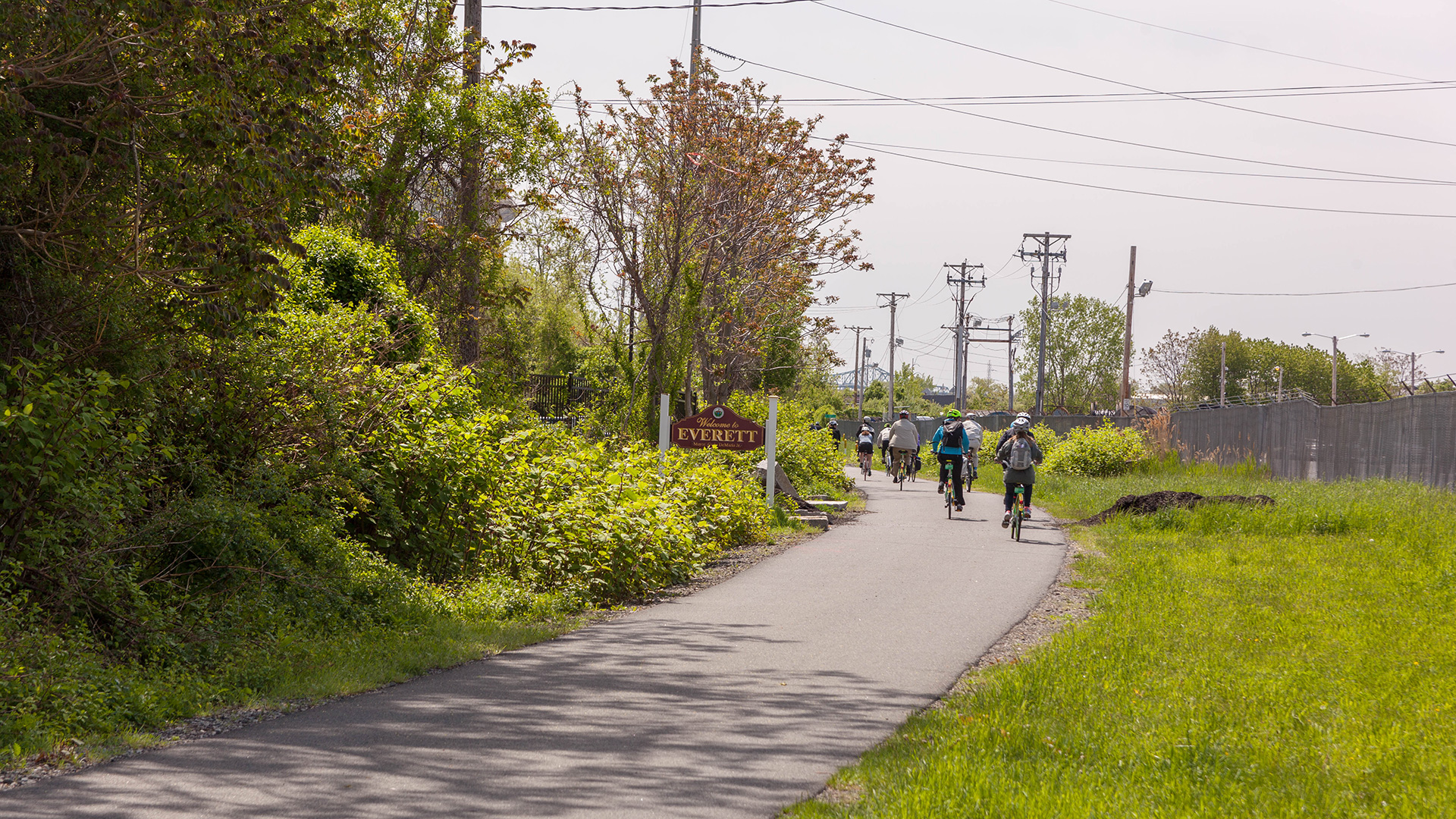
Photo Credit: Jeff Dietrich
All four of the shared use paths in the study were associated with increased spending, which generates increased economic output into the community, jobs, and tax revenue. We determined the economic impact to the communities based on path count data, intercept survey data, and an economic impact modeling tool, IMPLAN. Our methodologies focused on quantifying the economic impacts of user expenditures, property values, business revenue, employment trends, and tax revenue. The total number of jobs, the total economic output to the communities, and the total taxes generated (federal, state, and local) can be seen in the table below.
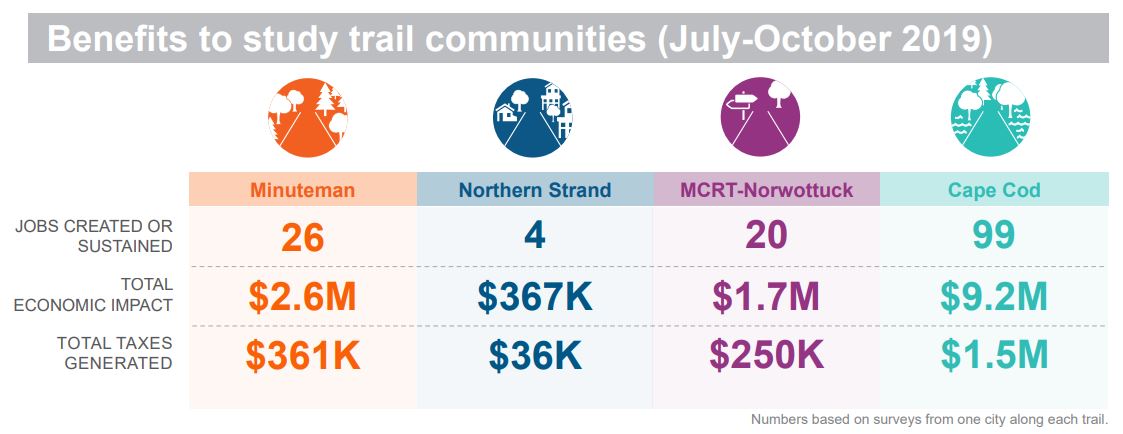
Safety Benefits of Shared Use Paths
In addition to reviewing crash impacts, we evaluated perceived crime near the four shared use paths in the study. 48% of survey respondents indicated they think the shared use path has had no effect on crime rates in the area, while 23% think that the path’s presence has reduced crime rates in the area. Approximately 29% of users responded that they felt unsure whether or not the path had an effect on crime.
Shared use paths can deter crime by creating lively and inhabited spaces. Research dating back to 1998 has indicated the extremely rare occurrences of crime near or related to shared use paths. In a 2001 study of tunnels on pathways, 8% of interviewed path managers provided unsolicited comments about reductions in noise, crime, and litter in the area surrounding the tunnel of the pathway.

Accessibility Benefits of Shared Use Paths
Shared use paths play an important role in providing an accessible route for people to walk, roll, and bike for many different trip purposes. We used geospatial analysis techniques to understand and quantify the types of destinations served by shared use paths, as well as the different groups of people who are able to access both the paths and the places they connect. Specifically, we sought to quantify the transportation-disadvantaged populations within walking and bicycling distance of their community path.
These results indicate that shared use paths are accessible to several transportation-disadvantaged populations for utilitarian, commuting, recreational, and exercise 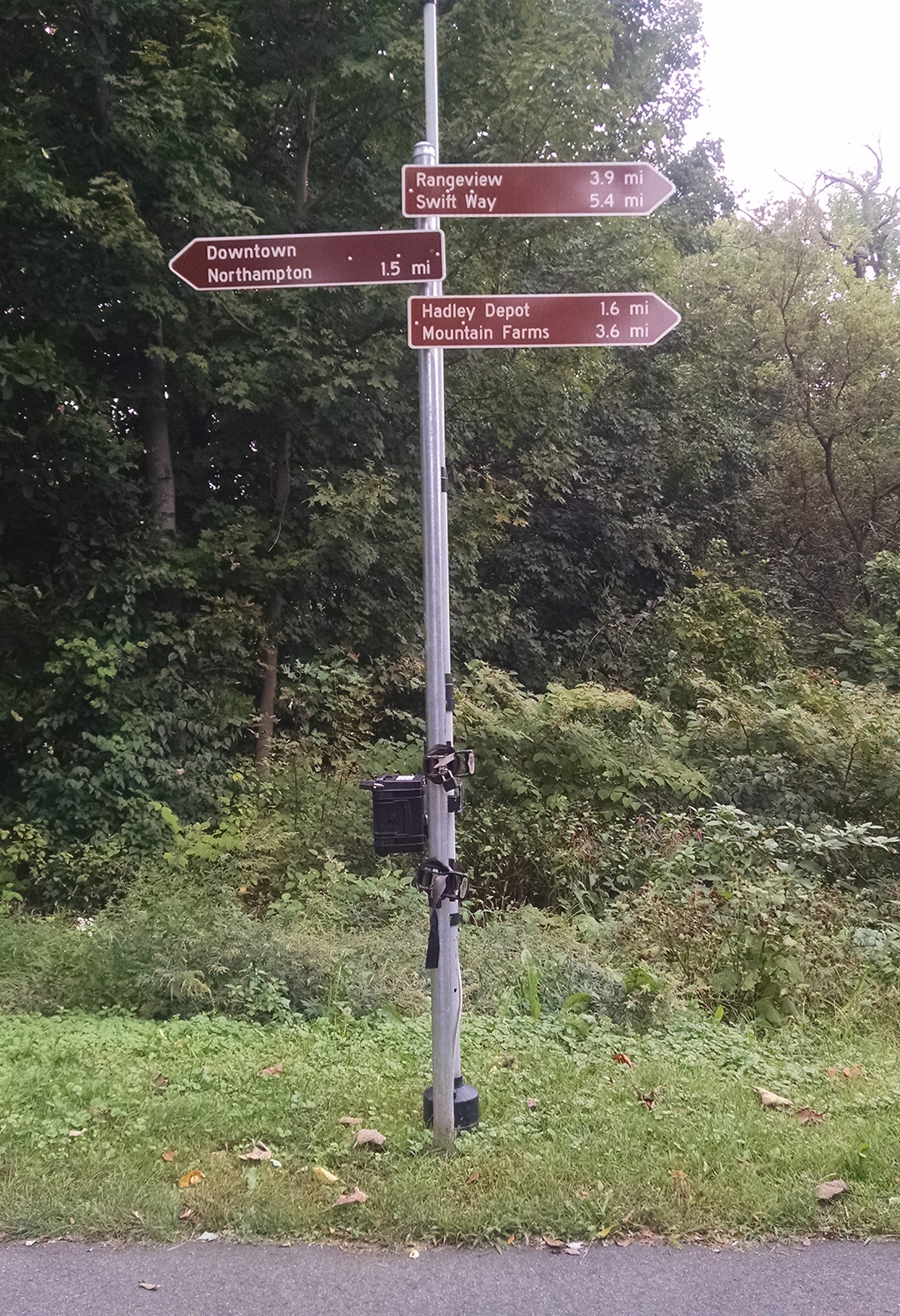 purposes.
purposes.
- By walking 15 minutes, about 4,100 people in minority groups, 2,200 people aged 65+, 3,700 people aged 19-, 1,600 people with a disability, 3,400 people experiencing poverty, 1,200 households without a car, and 1,000 households with limited English-speaking ability can access one of the studied shared use paths using sidewalks or very low speed and volume roadways.
- By bicycling 15 minutes, about 1,300 people in minority groups, 600 people aged 65+, 1,100 people aged 19-, 400 people with a disability, 900 people experiencing poverty, 400 households without access to a car and 400 households with limited English-speaking ability can access one of the studied shared use paths using bicycle facilities or very low speed and volume roadways.
- By walking 15 minutes from the shared use path in their communities, shared use path users can access 8 libraries, 3 community health centers, 2 schools, 36 institutes of higher education, and 6 town halls.
- By bicycling 15 minutes from the shared use path in their communities, shared use path users can access 12 libraries, 10 community health centers, 3 schools, 75 institutes of higher education, and 9 town halls.

Quantifying the Benefits of Active Transportation
MassTrails’ study results point to the many measurable impacts shared use paths on the safety, accessibility, sustainability, and overall wellbeing of their communities. This type of research can equip shared use path and other active transportation projects to compete for transportation funding.
To help local jurisdictions plan and assess the feasibility of potential shared use paths, MassTrails has created a tool to quickly estimate the cost of shared use path projects. Later this year, they will also release the Planning and Design Guide, which will draw on a combination of national best practices, original research, and the experience of local experts, agencies, and partners to guide the planning and project development of shared use paths, recommend key design concepts, and advise on proven performance measures for evaluating the paths’ effects.
Find the full study here on MassTrails’ website. To talk further about our methodology, findings, or anything else related to quantifying the benefits of active transportation, feel free to reach out to any one of us!
